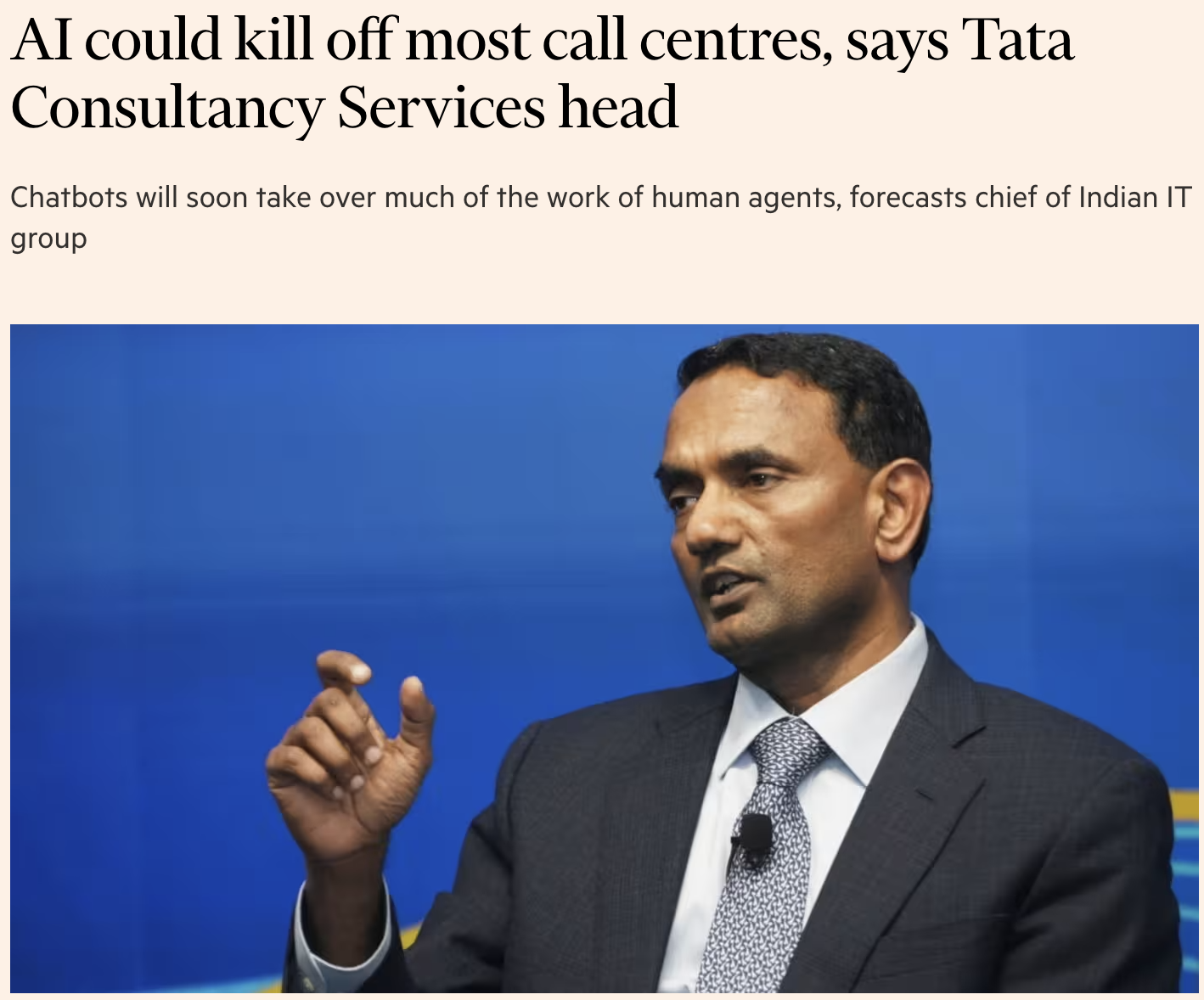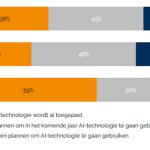At the beginning of May, the KSF published the results of a poll regarding the use of AI in customer contact. The picture emerges that the field is applying AI on a large scale or is making plans to do so. Is customer contact as a field a leader in our country when it comes to the use of AI?
First the most important results of the poll. Of the respondents involved in the KSF poll three quarters worked for an in-house contact center, a quarter came from a facility contact center. The know-how about AI is estimated to be highest among the facilities. They are therefore leading the way in the use of AI, but in-house contact centers appear to be catching up in the coming year: 46% of them indicate that their organization will implement AI in the coming year.
The use of AI becomes more common as the contact center becomes larger. If organizations have no plans to adopt AI, the main reasons for this are legacy IT issues, privacy issues and no need or added value. Just under half of respondents strongly support the use of AI in the contact center; about half are open to it, but have reservations.
Main applications
Current AI applications mainly have a supporting role: they are mainly aimed at making the quality of customer contact more efficient and better, according to the KSF survey on the use of AI in customer contact. Automatic reporting and analysis (68%) means there is more time for the customer contact employee to handle the conversation qualitatively. At facility contact centers, AI is used significantly more often for customer satisfaction research, feedback and complaint analysis (38% facility compared to 13% in-house) and performance measurement/reporting (42% facility compared to 19% in-house). Smart chatbots and virtual assistants are often used in larger customer contact centers (more than 100 seats) (71%).
Main revenues
On the revenue side, attention is mainly drawn to increased productivity and cost savings, faster customer service and more time for more complex issues. However, the size of this productivity gain has not been quantified and no comparison period has been established. In a recent article on Ziptone pointed out William van den Brink points out that the average call duration has increased significantly in many contact centers in recent years. The claims about productivity gains gain in significance (or not) if you also take into account the changes in your AHT over recent times. The frequently heard claim about call reduction is comparable: are you really receiving fewer calls or has the volume increase decreased? It is difficult to measure without a control group.
Impact on the agent's work
The KSF also asked about the impact of AI on the work of customer contact employees. Two-thirds of respondents estimate that impact as 'major', one-third as 'average'. In the explanations, according to the KSF, respondents indicate that the work itself will change and mention both opportunities (the work will be different, AI has a supporting role) and threats (loss of turnover, fewer employees/hours required).
Only a very small proportion of employees react negatively to the use of AI, according to the respondents. It is interesting that employees do not seem to worry. Is that image correct and if so, how far ahead do those employees look? You should compare this outcome with the average job retention time of the customer contact employee.
BV Nederland is more pronounced
However, at a national level, the work floor of BV Nederland thinks differently about AI. From research commissioned by Insight Enterprises 6 in 10 respondents from Dutch companies expect AI to replace jobs. While management believes that jobs will not be completely replaced by AI, this fear is much greater among the staff themselves.
Slightly more outspoken is the CEO of Tata Consultancy Services, one of the largest IT service providers in the world. CEO K Krithivasan predicts that chatbots will soon take over much of the work of human agents. “Artificial intelligence will lead to one within about a year 'minimal' need for call centers,” the CEO said in the Financial Times of April 25 this year.
TCS is not seeing any job losses at the moment, but the future looks different when it comes to the use of AI in customer contact. “We are in a situation where the technology should be able to predict that a call is coming and then proactively address the customer pain point.” Krithivasan refers, for example, to the situation where chatbots are able to analyze a customer's transaction history.
TCS's message is not a popular one: in its home country India, according to the Indian trade association Nasscom, more than 5 million people work in IT and business process outsourcing. However, Krithivasan also acknowledges that “we are in a phase of hype where we overestimate the benefits.”
Legal right to contact with a human being
Gartner, creator of the hype cycle, goes one step further and predicts that as a result of the pursuit of digital solutions, the EU will introduce rules within the next three years aimed at “the right to speak to a human being”. Gartner also says that with the current state of technology, “it is too risky, expensive and difficult to replace customer service agents with a generative AI-driven chatbot.”
Customer contact area leading with GenAI?
Is the customer contact field a leader or not when it comes to the application of AI? That remains a difficult question. Research from Rackspace Technology (Foundry for AI by Rackspace (FAIR) 2024) shows that more than 60% of Dutch organizations use GenAI to improve business processes. According to the Rackspace research, it also shows that the adoption of AI is happening exceptionally fast. At 30% of Dutch organizations, AI is currently fully integrated into employee productivity applications and another 26% of companies are taking the first steps in this regard.
The use of AI is most advanced in the development of products and services for customers. 30% of Dutch companies have already fully integrated AI and another 35% are in the initial phase. Nearly half (48%) of Dutch respondents indicated they were “operationally ready” for AI. The driving force behind companies' AI strategy is the IT department, according to 56% of respondents. However, IT teams also receive support from several other departments, such as customer service (48%) and marketing, sales and finance (41%).
The Netherlands is lagging behind
Research commissioned by Google conducted by the Implement Consulting Group paints a different picture. Not only are we lagging behind in deployment in the Netherlands compared to countries such as Belgium, Denmark and Luxembourg, fewer companies in the Netherlands also expect generative AI to increase productivity. Plans of Dutch companies are less ambitious than those of companies in neighboring countries. The Netherlands therefore belongs to the middle group of digital leaders in Europe, according to Google. “The Netherlands traditionally has an excellent digital infrastructure, but is in danger of missing the boat in the field of AI,” the company concludes.
Expected: the results of a Ziptone poll
The field of customer contact contains clear use cases that are actually being addressed – if we are to believe the companies that participate in polls and studies. The figures on adoption of and intentions to use AI in the customer contact sector are generally somewhat higher than the figures for the Netherlands as a whole.
Ziptone will soon also release the results of a poll among customer contact professionals from various countries about the use of AI in customer contact. Perhaps this can support a cautious conclusion about the leading position of the customer contact field. (Ziptone/editors)
Featured, Technology



